With USAID support, Puerto Rico, Colombia is strengthening land governance and improving opportunities to invest in public spaces
A Tragic Day
As she walks, Elizabeth Ríos seems to carry images of the guerrilla and paramilitary violence that shook the municipality of Puerto Rico for much of the 1990s and 2000s.
“We had security problems,” says Ríos looking off into the distance, recalling times she doesn’t know how she survived. “One day there were two dead, another day, three. The town was divided until 1999, when the guerrillas took control.”
It was on July 10, 1999, when some 2,000 guerrillas of the FARC’s now defunct 42nd Front stormed and besieged the entrance to Puerto Rico and surrounded the police station, which at the time was staffed by about 30 policemen.
“Those policemen were like cannon fodder,” Ríos still recalls with fear, evoking the images of horror in her mind. “The guerrilla shot them with rifles and threw gas canisters at them.”
The bloodshed ended after a 40-hour siege of the police station leaving five policemen dead. The remaining tired 28 policemen gave up when they had no more ammunition or food and were kidnapped by the insurgents.
For Ríos, who has been a member of the Puerto Rico municipal council for 15 years and knows the history of the conflict in the municipality, the FARC takeover also destroyed the local branch of the Caja Agraria, a gas station, and left the town’s population without electricity. To never forget this difficult chapter, with the support of Ríos and the council, the battle site was converted into a memorial park in 2013.
Untitled Parcels

The Parque de la Vida y de la Paz, as the memorial park is officially known, has a monument commemorating the fallen policemen and those who were kidnapped during the three-day siege. But the parcel of land where the battalion was once located has never been titled in the name of the municipality. In fact, hardly any public properties in Puerto Rico are titled. Following the 2016 Peace Accords signed with the FARC, formalizing public properties became a priority. Clear land rights are necessary for rural development investments. With support from USAID, through the Land for Prosperity program, Puerto Rico titled the parcel where the park stands. The procedure is relatively simple, but no less important.
In 2022, USAID partnered with Puerto Rico leaders to create a Municipal Land Office. In its first six months, the local land office, which is embedded under the municipality’s Secretary of Planning has identified dozens of public parcels in the municipality that cannot receive national or regional funding without a registered land title.
“Legalizing property is fundamental. If not, we find ourselves in this bottleneck that, if they are not legalized, no investment can be made in them. Historically, no one cared about legalizing property, and the land administration process was poorly executed. This is an example of a mistake from the past that brings us consequences today.”-Diana Navarro, Mayor of Puerto Rico
 In the Municipality’s Name
In the Municipality’s Name
With USAID’s support, the Municipal Land Office has titled 10 public properties including the parcels of the Municipality Offices, the Fire Department, Villa García Park, El Morichal school, Villa Suárez Park and the memorial to the police battalion, Parque de la Vida.
“To have a local land office in the municipality, with the support of development partners, is very important,” said Mayor Navarro. “We still need to title 43 schools, four health centers, and another 51 community spaces.”
In addition to legalizing and titling the municipality’s public properties, the Municipal Land Office can title private properties in urban areas. The office’s staff includes land surveyors, lawyers, and social workers who raise awareness and promote a culture of formal land ownership. For the 12,000 inhabitants of Puerto Rico, the office represents a place to go with questions and learn about the land formalization processes. This year, Puerto Rico has already delivered the 32 land titles for urban parcels, all free of charge. The initial goal is to title 400 properties.
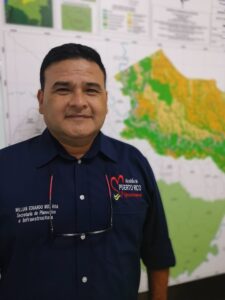
Juan Eduardo Ruiz, Puerto Rico’s Secretary of Planning, says it was vital to create a municipal land office in Puerto Rico because the office decentralizes land administration and improves coordination with Colombia’s national land agencies and property registry.
“Before this, the measurements of properties were never accepted by the IGAC’s cadastral offices because of differences, and a cadastral correction process had to be done,” says Secretary Ruiz. “Now we have the capacity to get it right.”
In the Meta Department, USAID is supporting a handful of land offices that have already titled hundreds of properties, including in neighboring Puerto Lleras and Fuentedeoro.
“I already knew about the Fuentedeoro Land Office,” Ruiz said. “I knew Puerto Rico would give strong results with an office here. It has been very well received in the municipality.”
Besides providing land tenure security for families who have lived in Puerto Rico for decades, among other benefits, landowners can access credit and government subsidies to improve their homes or for agricultural projects in rural areas since financial entities are more likely to lend money to people who have a registered property title.
“Now it is essential to legalize property in rural areas”, adds Mayor Navarro. With the resources that come from the payment of the property tax of the legalized properties, the Mayor’s Office will be able to raise money through property taxes to improve basic services in the municipality.
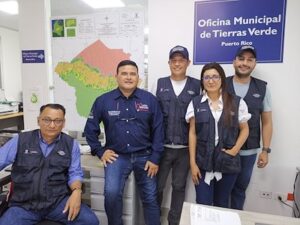


Puerto Rico has already delivered the 32 land titles for urban parcels and aims to title 400 properties.
This blog is cross-posted from the Land for Prosperity exposure site.


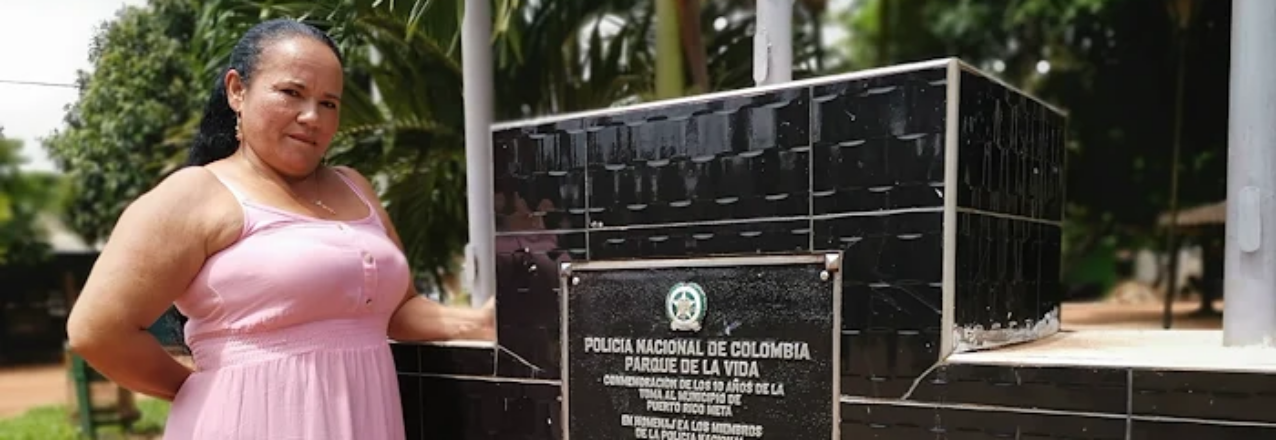





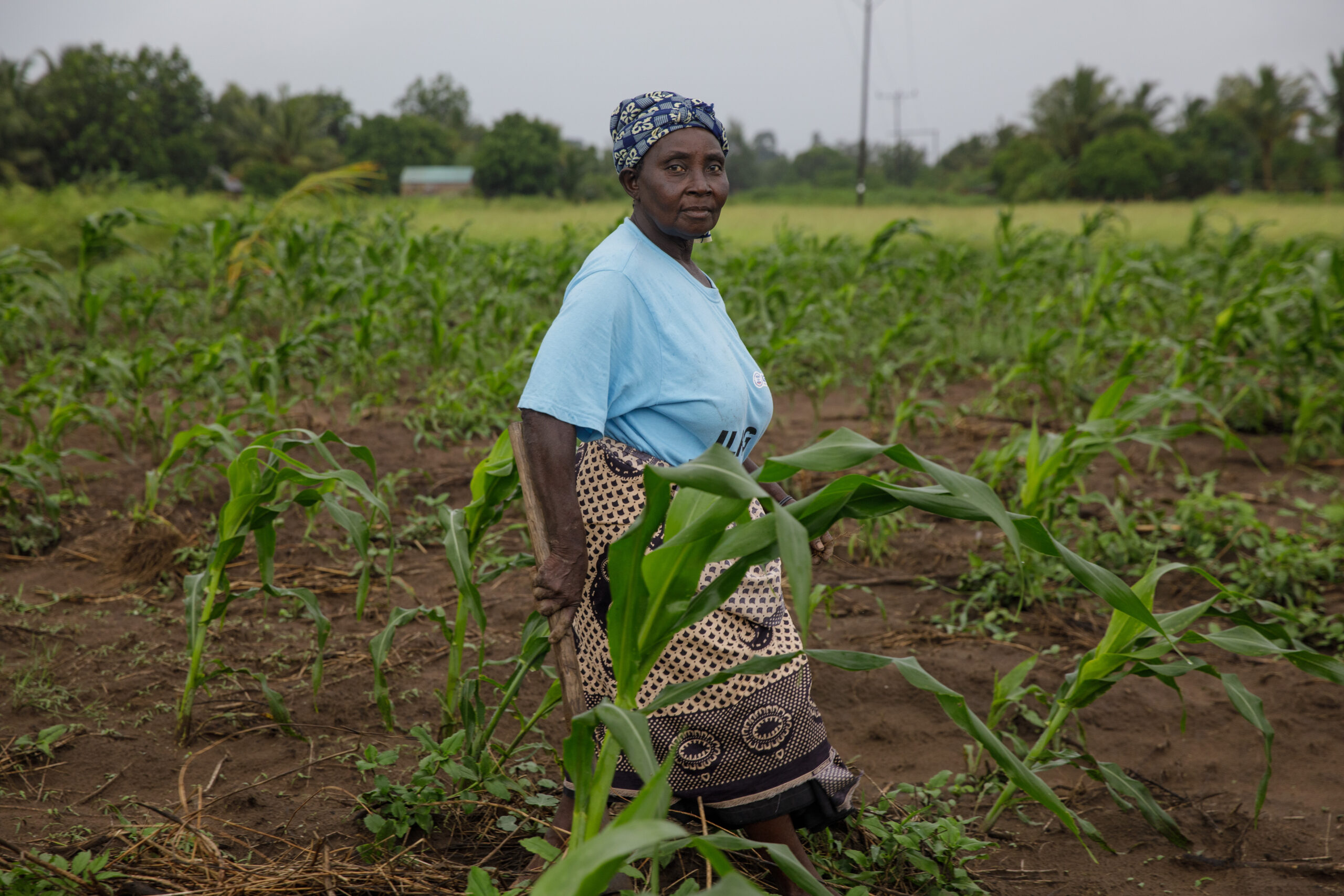
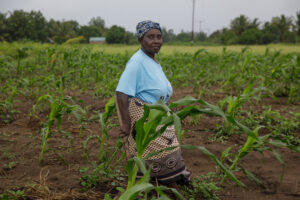 Floriana Mariano Jose, 69, never had her own land. Last year, she received the long-term right to use a half-hectare plot in Inhangulue, Mozambique, from local agroforestry company Grupo Madal. This was revolutionary for Floriana: her plot allowed her to move beyond subsistence farming and enter commercial value chains, growing coconuts and beans to sell. She signed a commercial farming agreement with Madal, which is providing her with seeds, guidance on how to care for these crops, and a guaranteed market for her produce. She feels confident having her land use rights documented on paper, knowing that her daughters and granddaughters will be able to continue to work this land in the years to come. As she said: “In addition to a guaranteed buyer and support to increase our production, there is a lot of work within the community to support women, to decrease violence against women, and to ensure that our husbands know they can’t take the money we make selling coconut and beans.”
Floriana Mariano Jose, 69, never had her own land. Last year, she received the long-term right to use a half-hectare plot in Inhangulue, Mozambique, from local agroforestry company Grupo Madal. This was revolutionary for Floriana: her plot allowed her to move beyond subsistence farming and enter commercial value chains, growing coconuts and beans to sell. She signed a commercial farming agreement with Madal, which is providing her with seeds, guidance on how to care for these crops, and a guaranteed market for her produce. She feels confident having her land use rights documented on paper, knowing that her daughters and granddaughters will be able to continue to work this land in the years to come. As she said: “In addition to a guaranteed buyer and support to increase our production, there is a lot of work within the community to support women, to decrease violence against women, and to ensure that our husbands know they can’t take the money we make selling coconut and beans.”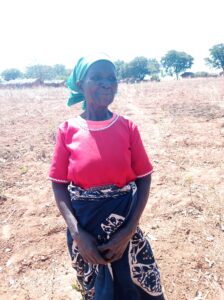 Joyce Daimoni is a 70 year old woman with physical disability who raised seven children and over 30 grandchildren in Chinthankhwa, Malawi. Following custom, she moved to her husband’s village when they married. Custom also dictates that once she left her maternal home, she was not allocated land there and would rely on his land for life. She has farmed the land her whole life, growing groundnuts and maize for the family to eat and sell. When a customary land documentation program started in her village this year, others in the community tried to stop her family from registering their land, saying the land belonged to the clan. Joyce sought help from the local Customary Land Committee and was referred to the Customary Land Tribunal, who decided in favor of Joyce and her husband. They were able to finally register their land, in both their names, and Joyce is relieved. “This means we are still going to be using the land. I am happy we can still cultivate the land and our children will be able to use this land too.”
Joyce Daimoni is a 70 year old woman with physical disability who raised seven children and over 30 grandchildren in Chinthankhwa, Malawi. Following custom, she moved to her husband’s village when they married. Custom also dictates that once she left her maternal home, she was not allocated land there and would rely on his land for life. She has farmed the land her whole life, growing groundnuts and maize for the family to eat and sell. When a customary land documentation program started in her village this year, others in the community tried to stop her family from registering their land, saying the land belonged to the clan. Joyce sought help from the local Customary Land Committee and was referred to the Customary Land Tribunal, who decided in favor of Joyce and her husband. They were able to finally register their land, in both their names, and Joyce is relieved. “This means we are still going to be using the land. I am happy we can still cultivate the land and our children will be able to use this land too.”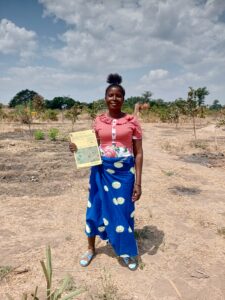 When her husband passed away 15 years ago, Mary Nkhowani, 55, and her 5 children returned to her home village of Muzumbwa in Chifunda Chiefdom, Zambia, to grow maize for subsistence. She went from cultivating her husband’s land to cultivating her father’s land, never imagining women could hold land in their own right. When her father died, she inherited his land. But in rural Zambia, it is often not easy for women – especially widows – to hold land. Twice Mary experienced land grabbing by members of her extended family. Once a USAID-supported land documentation program began working in her village, Mary attended sensitization meetings and learned that women can own land; she then registered her land. Motivated by this life-changing experience, Mary volunteered to serve on the village land committee to help other women have land documented in their own names. “The certificate puts a seal on the land that it is mine and no one can grab it. It means peace for me in life and in death because there were a lot of conflicts over land. Everyone wants land and if you are not a man, no one thinks you are entitled. I feel very happy that the future of my children and grandchildren is now secure.”
When her husband passed away 15 years ago, Mary Nkhowani, 55, and her 5 children returned to her home village of Muzumbwa in Chifunda Chiefdom, Zambia, to grow maize for subsistence. She went from cultivating her husband’s land to cultivating her father’s land, never imagining women could hold land in their own right. When her father died, she inherited his land. But in rural Zambia, it is often not easy for women – especially widows – to hold land. Twice Mary experienced land grabbing by members of her extended family. Once a USAID-supported land documentation program began working in her village, Mary attended sensitization meetings and learned that women can own land; she then registered her land. Motivated by this life-changing experience, Mary volunteered to serve on the village land committee to help other women have land documented in their own names. “The certificate puts a seal on the land that it is mine and no one can grab it. It means peace for me in life and in death because there were a lot of conflicts over land. Everyone wants land and if you are not a man, no one thinks you are entitled. I feel very happy that the future of my children and grandchildren is now secure.”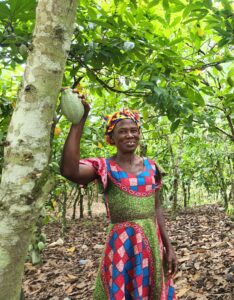 When Grace Annison, 60, got married, she moved to her husband’s cocoa farm in Asorefie, Ghana. Over the past 40 years, Grace has worked on this land every day: during the cocoa season she prunes the trees, harvests the cocoa pods, and dries the beans. Throughout the year she plants pepper, cassava, plantains, and tomatoes for her family to eat and to sell, a crucial source of income in the cocoa off-season. The land and the fruits of her labor enabled Grace to raise her six children. However, as it is customary in the area, the land is registered in her husband’s name only. Grace hopes that if something happens to her husband, nobody will take the land away from her. “I hope to continue to farm the land to achieve my next dream to build a comfortable house for my family.”
When Grace Annison, 60, got married, she moved to her husband’s cocoa farm in Asorefie, Ghana. Over the past 40 years, Grace has worked on this land every day: during the cocoa season she prunes the trees, harvests the cocoa pods, and dries the beans. Throughout the year she plants pepper, cassava, plantains, and tomatoes for her family to eat and to sell, a crucial source of income in the cocoa off-season. The land and the fruits of her labor enabled Grace to raise her six children. However, as it is customary in the area, the land is registered in her husband’s name only. Grace hopes that if something happens to her husband, nobody will take the land away from her. “I hope to continue to farm the land to achieve my next dream to build a comfortable house for my family.”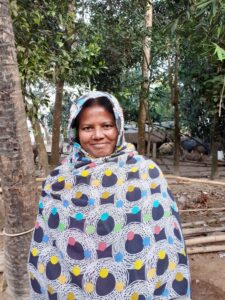 Land is the most important asset for farmer Sumsurnehar Begam. Early in her marriage, Sumsurnehar and her husband farmed two plots of land in West Bengal, India: a small piece of land that he had inherited and another small plot they purchased. However, they never updated their land records, and continued to farm without any formal proof of ownership for years, unaware of the risks. After saving for many years, in 2020 they decided to buy a third plot. By this time, Sumsurnehar had attended land literacy training supported by USAID and PepsiCo and knew the importance of formalizing the land transaction. As the only member of the family who is literate, she took charge and was able to complete the registration process by herself, ensuring that her name was included on the title. This gave her economic independence and made her future more secure. For the past two years she has been cultivating rice and potatoes on this land, independently managing the small farming business. With her increased confidence as a farmer, she joined other women to lease land to grow potatoes and formally enter into the potato supply chain for PepsiCo. “I feel confident that I have my own land and the proper documents to prove it. This is an asset for my good and bad days.”
Land is the most important asset for farmer Sumsurnehar Begam. Early in her marriage, Sumsurnehar and her husband farmed two plots of land in West Bengal, India: a small piece of land that he had inherited and another small plot they purchased. However, they never updated their land records, and continued to farm without any formal proof of ownership for years, unaware of the risks. After saving for many years, in 2020 they decided to buy a third plot. By this time, Sumsurnehar had attended land literacy training supported by USAID and PepsiCo and knew the importance of formalizing the land transaction. As the only member of the family who is literate, she took charge and was able to complete the registration process by herself, ensuring that her name was included on the title. This gave her economic independence and made her future more secure. For the past two years she has been cultivating rice and potatoes on this land, independently managing the small farming business. With her increased confidence as a farmer, she joined other women to lease land to grow potatoes and formally enter into the potato supply chain for PepsiCo. “I feel confident that I have my own land and the proper documents to prove it. This is an asset for my good and bad days.”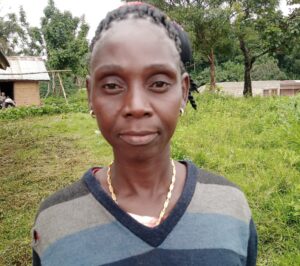 Like most rural women in Zor-Ganaglay community in Liberia, Mamie Kpahn depends on the land and natural resources around the Blei Community Forest for her livelihood. Responding to increasing pressure over natural resources, the Liberian government has enacted legislation and processes to allow communities to self-identify, create communal governance structures, and obtain formal documentation of their community lands. Mamie notes that even though women often use the land more than men, they have been traditionally excluded from decision making around land in the community. After hearing about the importance of inclusive participation, she decided to run for her local land governance committee and was elected as chairperson. Today she participates in every step of the decision-making process related to the community land. Recently she attended a boundary harmonization meeting and helped resolve boundary conflicts between hers and a neighboring community. “As a woman, I was proud to be in this meeting and be part of the decision making to bring us together as neighbors. I am happy that the two communities can be in peace and work together. This will help our children manage our land in the future.”
Like most rural women in Zor-Ganaglay community in Liberia, Mamie Kpahn depends on the land and natural resources around the Blei Community Forest for her livelihood. Responding to increasing pressure over natural resources, the Liberian government has enacted legislation and processes to allow communities to self-identify, create communal governance structures, and obtain formal documentation of their community lands. Mamie notes that even though women often use the land more than men, they have been traditionally excluded from decision making around land in the community. After hearing about the importance of inclusive participation, she decided to run for her local land governance committee and was elected as chairperson. Today she participates in every step of the decision-making process related to the community land. Recently she attended a boundary harmonization meeting and helped resolve boundary conflicts between hers and a neighboring community. “As a woman, I was proud to be in this meeting and be part of the decision making to bring us together as neighbors. I am happy that the two communities can be in peace and work together. This will help our children manage our land in the future.”